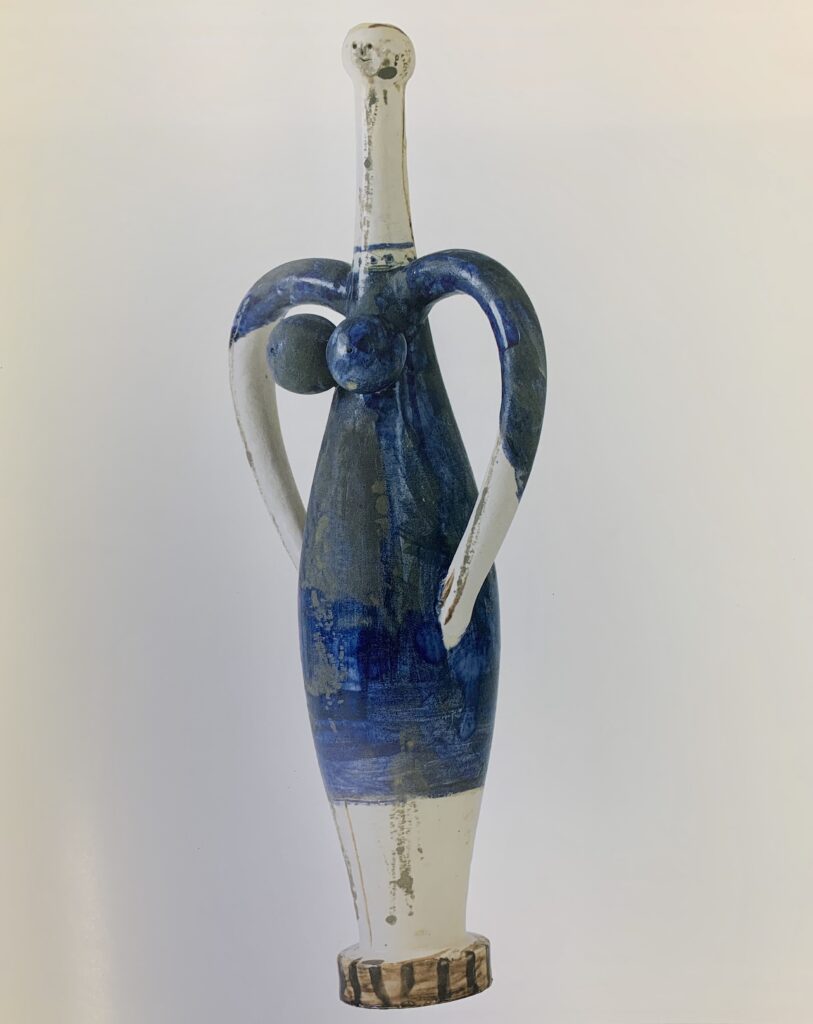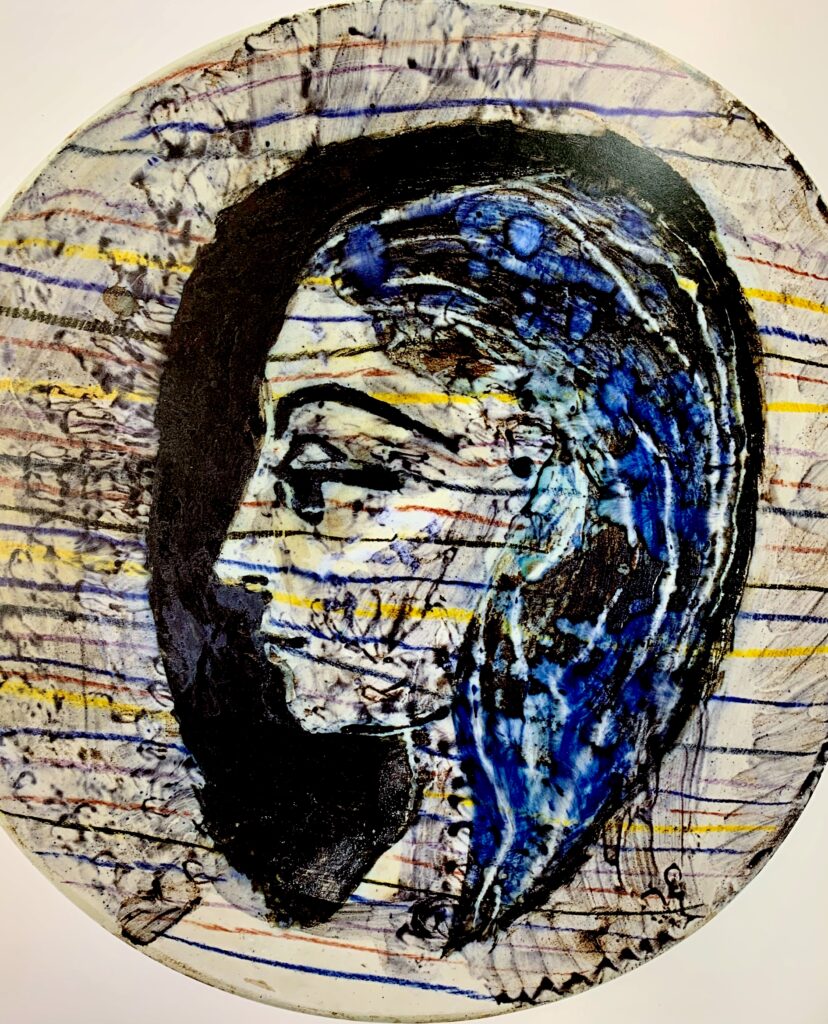Francoise Gilot

white earthenware, thrown, modelled, assembled elements, incised, painted with oxides, glazed,
40.5 cm
Undated (1947-48)
Photo by Eric Baudouin
The end of the war brought about a new sense of optimism to Picasso, who was now in his early 60’s. As a man entering his twilight years, Picasso most likely would have wanted to return home to Spain. Unfortunately, his home country was under Franco rule at the time. Maintaining his desire for nostalgia and familiarity, Francoise Gilot and Pablo Picasso made their way to Antibes, in the south of France. Along the coast, the notoriously complex and stubborn artist became enthralled by the colors and the visual clarity of the French Riviera. The brilliance of their surroundings, accompanied by the feeling of nostalgic antiquity, fostered a desire for exploration within Picasso.
Gilot and he moved into Villa La Galloise where they remained until Gilot left in 1953. As a well-known painter and printmaker, Picasso was quickly welcomed into the artistic circles of the Cote d’Azur. Towards the end of July 1946, Gilot introduced Picasso to Suzanne Douly and George Ramie. As the owners and lead craftsmen at a pottery studio named Madoura, the couple was interested in forming a working relationship with Picasso. Suzanne offered her tools, and resources at Madoura to Picasso, in return, the couple would be able to sell and deal the work that he created while working at the atelier.
In the late 1940s, Picasso designed a series of pitchers called tanagras. Late Classical and Hellenistic figures were first discovered at the Greek site of Tanagra by nineteenth-century looters, hence their designation as ‘tanagras’. These pots were first thrown then hand-molded by Picasso. Often, Suzanne Douly (a lead craftsman at the Madoura Studio) would ultimately shape the vessel into its final form. The tanagras are in the shape of Greek amphorae; the arms of the woman functioning as semi-circular handles. Inspired by Francoise Gilot’s figure, Picasso strived to immortalize her beatific figure. Gilot, however, left the Cote d’Azur in 53’ due to Picasso’s developing relationship with Miss Jacqueline Roque.
Jacqueline Roque

Large Bowl
white earthenware, thrown, painted with slips, ceramic pastels, partly glazed,
44 x 8 cm
14. 12. 57
Photo by Eric Baudouin
Pablo Picasso was seventy-two when he met Jacqueline Roque, while she was just twenty-six. The two met at the Madoura factory, where Picasso fell in love with the beautiful dark-eyed beauty he had found. Each day thereafter, Picasso drew a dove on her house in chalk and gifted her a red rose. Every day for six months he repeated this ritual before Roque agreed to date the artist. ‘Madame Z’, as she became known by her numerous portraits, is characterized by the intensity of the figure’s eyes, and the antique softness of her face. Roque had breathed life into Picasso’s work. He began churning out ceramics day and night, inspired by his new lover’s face.
This particular portrait of Jacqueline Roque emanates a controlled and enigmatic intensity. We see her profile, a style taken from Greek antiquity portrait painting. Her silhouetted profile in the center of the rounded plate also connotes images of Greek coins or ‘drachmas’. Her face is, however, covered in a veneer of thinly striped ceramic pastels. By having to look ‘through’ the lines of pastel to see Jacqueline’s face, the viewer is given the impression that Miss Roque is wearing a translucent veil. Francoise Gilot had been depicted with an often serious and macabre tone. Surrounded in dark blues and blacks, Gilot often appears rather morose. In contrast, ’Madame Z’ is depicted within a prism of color and life. The satisfying blue of her hair crashes through the portrait, like an ocean wave.